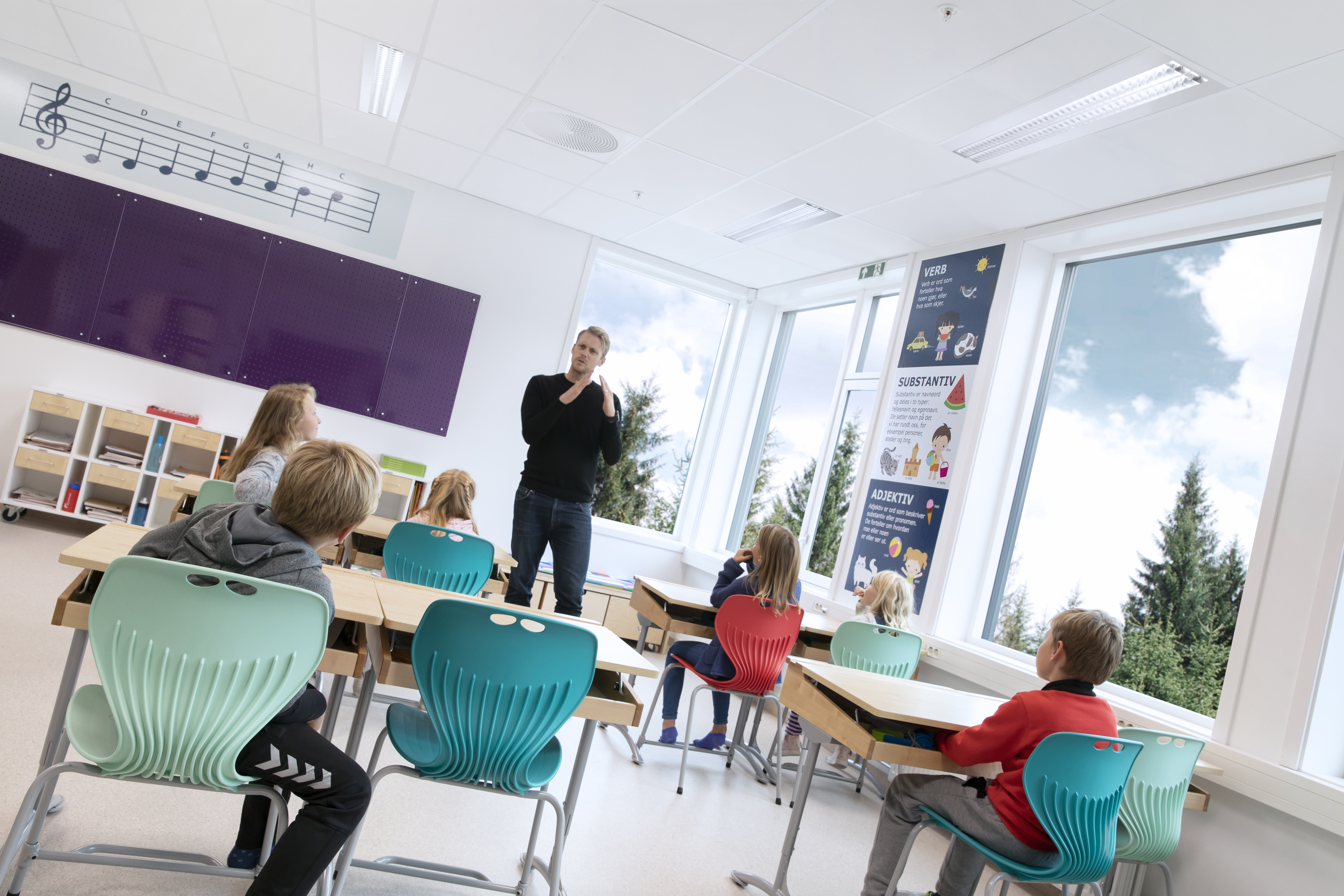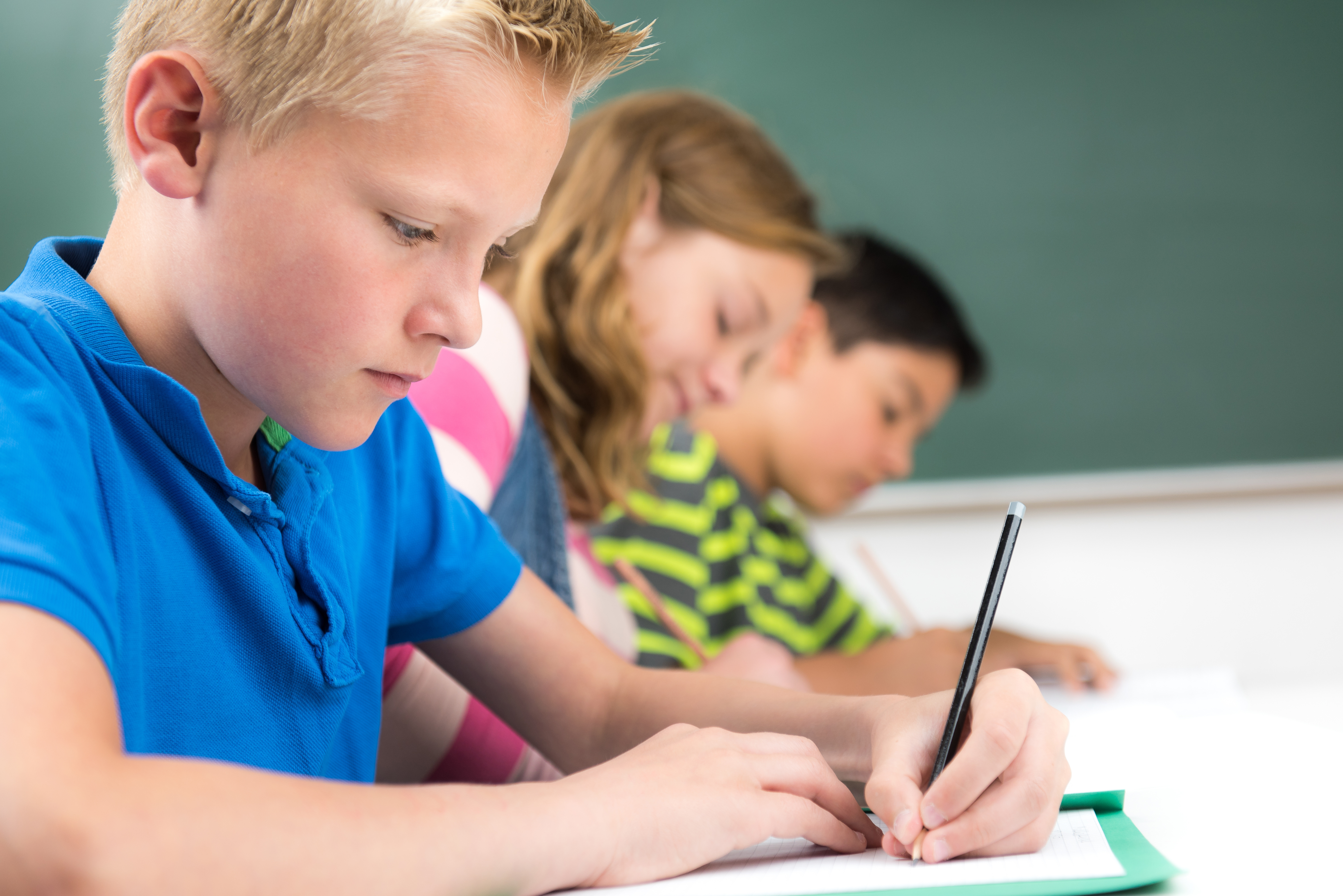According to Professor Barrett, most research on school design involves studying one or another feature of the subject. However, in their research, Prof Barrett and his team looked at all the aspects simultaneously and considered their combined effect. As a result, they were able to come up with evidence for the characteristics of ‘an optimal space for learning’.
Healthy, stimulating and individualised
We asked him how he would define good school building design and how it might affect the learning that takes place there.
Professor Barrett replied that to fully support learning, a space had to be ‘healthy’ (or ‘natural’), ‘moderately stimulating’ and provide an ‘individualised’ context ‘where people feel they can have some ownership. It’s hard to get all these things right at the same time as they may be in conflict, but together they can have a profound effect on learning.
“Drawing from our HEAD (holistic evidence and design) study, which was funded by the UK’s Engineering and Physical Sciences Research Council, the headline results were that the variations in the physical characteristics of the school explain 16% of the variations in learning progress over a year of the 3766 children in the 153 classroom spaces studied. This is a huge effect.”

Interacting factors
According to Professor Barrett, if you look at pretty much any aspect independently, say air quality or lighting, you may get correlations and indications. But this can be misleading because all the factors are interacting and competing. So, it is important to look at all the factors together, which after all is how we experience spaces anyway.
“Beyond that, you also have to extract the effect of the individual children’s characteristics. If you don’t do that, it confuses all of the analyses,” he added.
Can lighting contribute to better learning and if so, how?
Professor Barrett stated that about a fifth of that overall 16% impact is down to lighting issues. He elaborated that it’s important to get the right balance between daylight and artificial light.
-“A certain amount of daylight is good because it gives people a sense of time. But you mustn’t have too much light either. You get glare and other problems.” We were curious to know how he extracted that information. Prof Barrett responded: “We have specific, fairly simple ways to measure lighting, like the size of the windows and their orientation. And the quality and number of luminaires and their distribution. We used these lighting measures as part of our multi-level modelling (a form of regression analysis) to work out what the weightings against each factor in relation to learning progress were.”
Are there any challenges faced in implementing human-centric lighting in learning institutes? If yes, how do you think we can overcome them?
Professor Peter Barrett said that achieving a reasonable standard is not too difficult. You need ‘up-to-date luminaires’, ‘enough of them’, ‘locally controlled’, ‘unobscured windows’, ‘easy-to-use blinds’.
“Beyond this essential baseline, there will be opportunities to further enhance the environment with more sophisticated approaches, such as dynamic lighting, or the use of colour, or carefully placed localised light sources, etc.”

Challenging to spread awareness
Spreading more awareness about the importance of creating an ideal physical learning environment can be a real challenge, according to Prof Barrett. That’s because “teachers are bombarded with lots of information. And short of cash they find it hard to do things, but there is an essential willingness to do whatever helps.”
“We’ve made the information as widely available as we can. Designers and teachers have been taking it up enthusiastically. People have been talking about it on twitter and using the case studies available on our website. We’ve received great feedback. A lot of these things are quite easy to do. But then there is a design angle. Some companies such as IBI, which funded the pilot study of our work, have now developed generic designs. These are being used to build new schools.”
Prof Peter Barret’s research confirms that stimulation, individuality and naturalness (or SIN) have a profound effect on individuals occupying any space.
Read more about Professor Barrett’s research
A Human Centric Model
We asked Prof Barret if there are any particular areas of the SIN analytical model that need more research and development?
He replied: “The SIN model is very robust. It’s not just about children. It’s a human-centric model based on broad research that uses a lot of different sources. It would translate well into offices, hospitals and any places where there are people. Because we are talking about how they react to things.” According to the research, the spread of factors is 50% in the natural area, such as heat, sound and air quality. And 50% in issues of individuality and level of stimulation.
Prof Barrett believes that the main area where more research could be done is the layout and flexibility that schools provide, linked to teaching methods and styles of teachers, and the idea of a productive ‘fit’ between these two aspects.
He suggested that the lighting industry could help provide the flexibility needed in how we use space, by using light: “You could, for example, change a space very rapidly by creating sub-areas with light.”
Another potential area of study concerns tactile issues, like the type of surfaces, rough or smooth, natural materials, etc.
